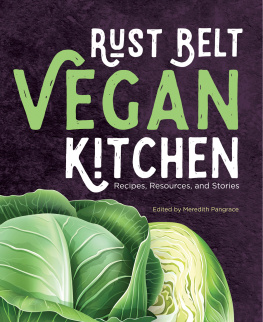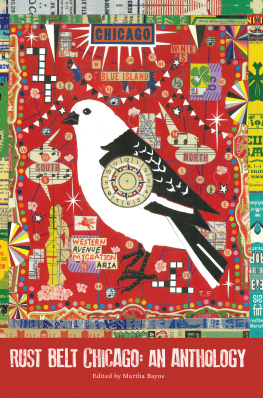Ajamu Kwame - Good kids, bad city : a story of race and wrongful conviction in America’s rust belt
Here you can read online Ajamu Kwame - Good kids, bad city : a story of race and wrongful conviction in America’s rust belt full text of the book (entire story) in english for free. Download pdf and epub, get meaning, cover and reviews about this ebook. year: 2019, publisher: Picador, genre: Detective and thriller. Description of the work, (preface) as well as reviews are available. Best literature library LitArk.com created for fans of good reading and offers a wide selection of genres:
Romance novel
Science fiction
Adventure
Detective
Science
History
Home and family
Prose
Art
Politics
Computer
Non-fiction
Religion
Business
Children
Humor
Choose a favorite category and find really read worthwhile books. Enjoy immersion in the world of imagination, feel the emotions of the characters or learn something new for yourself, make an fascinating discovery.

- Book:Good kids, bad city : a story of race and wrongful conviction in America’s rust belt
- Author:
- Publisher:Picador
- Genre:
- Year:2019
- Rating:4 / 5
- Favourites:Add to favourites
- Your mark:
- 80
- 1
- 2
- 3
- 4
- 5
Good kids, bad city : a story of race and wrongful conviction in America’s rust belt: summary, description and annotation
We offer to read an annotation, description, summary or preface (depends on what the author of the book "Good kids, bad city : a story of race and wrongful conviction in America’s rust belt" wrote himself). If you haven't found the necessary information about the book — write in the comments, we will try to find it.
Ajamu Kwame: author's other books
Who wrote Good kids, bad city : a story of race and wrongful conviction in America’s rust belt? Find out the surname, the name of the author of the book and a list of all author's works by series.
Good kids, bad city : a story of race and wrongful conviction in America’s rust belt — read online for free the complete book (whole text) full work
Below is the text of the book, divided by pages. System saving the place of the last page read, allows you to conveniently read the book "Good kids, bad city : a story of race and wrongful conviction in America’s rust belt" online for free, without having to search again every time where you left off. Put a bookmark, and you can go to the page where you finished reading at any time.
Font size:
Interval:
Bookmark:


The author and publisher have provided this e-book to you for your personal use only. You may not make this e-book publicly available in any way. Copyright infringement is against the law. If you believe the copy of this e-book you are reading infringes on the authors copyright, please notify the publisher at: us.macmillanusa.com/piracy.
To Kim
Seem like the whole city go against me
KENDRICK LAMAR, M.A.A.D CITY
To know a place, like a friend or lover, is for it to become familiar; to know it better is for it to become strange again. Not novel in the easy way of the new, but strange in a deep, disturbing way that does not dissipate, an unsettling revelation of what should have always been known, a revelation that implicates its belated discoverers.
REBECCA SOLNIT, SAVAGE DREAMS
Rickey, Wiley, and Kwame were incarcerated for a total of 106 years, one of the longest wrongful imprisonment casesif not the longestin American history. Many carry the blame for that injustice. And many were integral in righting that wrong. At certain points over four decades, people made choices and took actions that would lead to the exonerations. Carrie Wood decided to keep Rickey Jacksons OIP file open. Anthony Singleton asked Ed Vernon a hard question in a hospital room. Terry Gilbert sent me an email. Each of us carried the ball down the field as far as we could. Passing the finish line was a collective effort. This book aims to string those moments and contributions together.
This is a work of nonfiction. The book is based on hours of interviews with Rickey, Wiley, Kwame, and other subjects. Scenes, dialogue, and interior thoughts attributed to subjects were all mined from these interviews, as well as cross referenced with accounts from other sources.
When possible, these accounts were backed up by documentation. The paper trail on this case is significant; the original court transcripts, crime scene photos, police files, prison records, psychological reports, and depositions from civil litigation all helped fill in the picture. My own reporting notes and recordings from 2011 and 2014 were also key. In instances where police misconduct is alleged, the accounts are pulled from legal documents, depositions, and interviews.
A number of sources were critical in forming the historical accounts in this book, as well as some of the legal theory sitting behind the narrative. Few texts do a better job of sketching the citys backstory than Kenneth Kusmers A Ghetto Takes Shape: Black Cleveland, 18701930. Elizabeth Hintons From the War on Poverty to the War on Crime: The Making of Mass Incarceration in America deeply shaped my understanding of the federal governments impact in black urban areas. My thoughts on the legal system were heavily influenced by William J. Stuntz and James Q. Whitman. Jane Leovys essential Ghettoside completely rearranged how I thought about the mechanics of the American law and order. Robert J. Norriss recent history of the Innocence Movement, Exonerated, was also essential.
Cleveland, March 2011
Start in close with the pavement. This is a Cleveland story, so there will be some abused infrastructure in the mix. Asphalt chopped and diced by winters past, roadways split like bad fruiteyesore miles in all directions. There are places in the city where winter and neglect and budget priorities have knifed open the street, revealing the old brick or cobblestones below, history riding under the modern routes. In Clevelandand in a Cleveland storythe past is always near and persistent.
This particular no-account chunk of municipal pour was just a bent elbow of sidewalk on the citys eastern lip. Midmorning traffic floated by steadily, spinning off the streets to the north coiling around University Circle, a prim collection of hospitals, college greens, and museums. The money therethe new money reaching up in abstract glass medical buildings, the old money anchored in beaux arts marble and stonewas a one-eighty contrast from the surrounding neighborhoods, among the poorest in the country. The drivers slinging past us like pinballs in the chute likely had stopped paying attention to the blight long ago. I had. Id probably driven past this street corner hundreds of times without ever eyeballing the spot where we were now standing.
We were an odd pair, a mixed-race Laurel and Hardy with twenty-odd years stacked between us. Me: skinny, twenty-five, white, shivering in a parka, fingers wrapped around a spiral notebook, sneakers knocking rocks into the gutter. Kwame: fifty-four, black, athletically built from head to toe, meaty hands stuffed into his hoodie pocket. He usually gave off a friendly vibe, his cheeks tending to wander up his face into a half smile. But today his mouth was a tight nervous dash, his eyes clocking the surrounding street.
Perhaps he was placing his memories up against what he was seeing now. Weeds and grass where the Cut-Rate store had once stood. A quiet mosque in place of the flower shop. What had once been a tight line of two-story houses filling the streets to the south now was a battered run of gutted lots. Even the name of the thoroughfare pouring traffic into the nearby suburbs had changed in the last thirty yearsno longer Fairhill Boulevard, now Carl Stokes Boulevard.
If he couldnt place the old neighborhood, the old neighborhood probably couldnt place him. The last time hed stood on this pavement, hed been seventeen, his name had been Ronnie Bridgeman, and he was on his way to catching a murder charge.
It was now March. This was the overcast time of the year in Northeast Ohio when the days look like theyve been rubbed over with charcoal. After a few minutes of silence, Kwame nodded north to a stoplight where another street, Cedar Avenue, crossed Stokes. The bus will be coming from there.
In 1975, a white man was robbed and gunned down outside the Cut-Rate store where we now stood. Kwame was arrested, tried, and convicted of the crime. His older brother, Wiley, and best friend, Rickey Jackson, were also found guilty. No physical evidence tied the three young black men to the killing. The prosecutions only witness was a twelve-year-old neighborhood kid named Ed Vernon. The boy testified that hed seen the three commit the homicide. On this alone, they were sentenced to death, only missing the electric chair thanks to a U.S. Supreme Court ruling. Kwame was paroled in 2003. At the time we were standing together, his brother and best friend were still locked away, all due to lies.
We werent guilty, Kwame had explained to me six weeks earlier, when we first met. My mother, who was very religious, told me, Trouble is easy to get into but hard to get out of, but if youre not guilty of anything, the truth will set you free. But that wont work in politics and the law.
This was not something Kwame had broadcast loudly since his release. He only trusted me now because he wanted help. As a reporter for a local weekly paper, Id agreed to dig around his case. Yet as we stood on the corner, I wasnt sure whether or not I believed him. Id only been a journalist for three years, but I already knew belief was tricky terrain in journalism. From white-lie shading to outright prevarications, reporting, I learned early, largely involves unknotting bullshit.
Font size:
Interval:
Bookmark:
Similar books «Good kids, bad city : a story of race and wrongful conviction in America’s rust belt»
Look at similar books to Good kids, bad city : a story of race and wrongful conviction in America’s rust belt. We have selected literature similar in name and meaning in the hope of providing readers with more options to find new, interesting, not yet read works.
Discussion, reviews of the book Good kids, bad city : a story of race and wrongful conviction in America’s rust belt and just readers' own opinions. Leave your comments, write what you think about the work, its meaning or the main characters. Specify what exactly you liked and what you didn't like, and why you think so.








